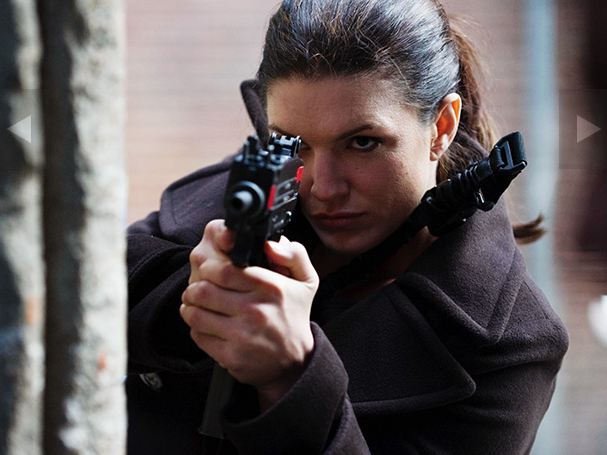Lesser is More, by David Bax
Steven Soderbergh has a well-known reputation for dividing his career into “one for them” and “one for me” categories. The implication, whether intended or not, is that his larger studio films (Erin Brockovich, Ocean’s 11, Contagion) are merely fulfilling a contractual obligation and affording him the freedom to make his smaller films (Full Frontal, Bubble, The Girlfriend Experience). To any halfway-serious film watcher, this dichotomy breaks down under the most minimal scrutiny. It trivializes the obvious care he puts into those studio films and fails to account for works such as his Solaris remake, clearly a very personal effort but still a wide release film with major stars. Still, it would be interesting to hear where a person who subscribes to this theory would place Haywire, Soderbergh’s latest. It is at once a crowd-pleasing genre effort – both a spy thriller and a martial arts action movie – as well as a bizarre and off-kilter mood piece. It’s also quite good.
Haywire begins in the middle of the story, with our heroine, Mallory (Gina Carano) hiding out from forces unknown to us at a diner in upstate New York. When a man named Aaron (Channing Tatum) comes in looking for her, we are treated to the first of numerous explosive outbreaks of fast, brutal and thrillingly realistic physical violence. Then, wounded, Mallory escapes with a hostage/passenger in tow, a fellow diner patron named Scott (Michael Angarano) who was unlucky enough to own a car and be standing by the front door. Mallory fills Scott in on the story and we see, through extended flashbacks, how she, a privately contracted operative, was set up by her employer overseas and how she has made her way back home. Once we catch up, the second half of the film concerns her tracking down those who framed her.
One might be tempted to describe Soderbergh’s style here as languid. That wouldn’t be right, though. Yes, it is slow-moving but it is also assured and determined, much like Mallory. The reason scenes take their time to unfold is that Soderbergh is captivatingly interested in exploring the process of what Mallory and her colleagues are doing. At a time when too many action films are content to throw a lot of exposition at us and get us to the next set-piece, Haywire is remarkably bold in the way that it takes its time describing what it requires to get from one point to another. Mallory’s escape from Dublin, for example, is a lengthy sequence that is elaborate enough to have its own movements and acts. It’s a short story within the larger one.
The structure of the screenplay is beautifully offset by two dominant elements. First is David Holmes’ jazzy and moody score. It, like many other elements of the film, suggests a more stolid but believable James Bond. Second is Soderbergh’s fluid camera, which moves freely without being disorienting. It only stops, really, when there is a fight.
These fights, which often involve weapons to some degree but which inevitably boil down to hand-to-hand combat, are the real focus of the film. Soderbergh is not interested in getting them over with quickly. He allows the film to linger inside their mini-narratives and he explores them fastidiously. Carano is a mixed martial arts fighter making her acting debut here and her talents are not overlooked. Nor is her physical power (or that of her opponents) diminished or made banal. When she is hit or when she hits someone, the result is immediate and palpable. It is both unsettling and guiltily exhilarating to see a man’s face be bounced off a metal stool. But Soderbergh is not lecturing us here. He is not a Michael Haneke, scolding us for enjoying the violence he’s offering for us to enjoy. This film is, above all, fun.
Carano’s inexperience as a thespian is the main drawback to the movie. She’s not jarringly awful as an actor but her line readings are flat and the levels of sympathetic humanity in Lem Dobbs’ deft, economical script only exist for her character in the words and not, alas, in the way they are spoken. Luckily, Soderbergh has surrounded Carano with a stellar cast, raising the overall prestige and craftsmanship. Michael Douglas, Antonio Banderas, Ewan McGregor, Michael Fassbender, Mathieu Kassovitz and Bill Paxton all appear and relish their brief time on screen.
Even apart from the ridiculous “one for them, one for me” theory of Soderbergh’s career, Haywire will likely end up classified a “lesser work.” If so, it will be an insult to those involved and to fans of genre film in general. Just because Soderbergh’s ambitions aren’t as grand and sweeping here as elsewhere does not make the film worth any less. He has told a good story well and refrained, at any point, from falling back on clichés to do it. He has made an action film that is recognizable as such but that is also as personalized and meaningful as any of his other work.






























